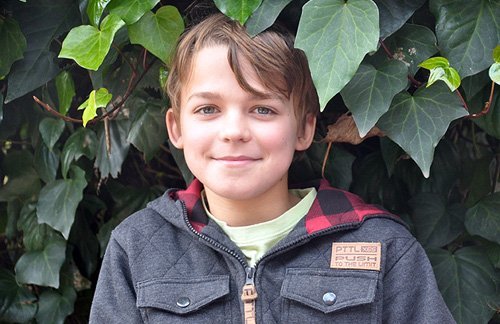Native wasp is arch enemy of redback spider

NOTORIOUS REDBACK SPIDERS are one of the more dangerous species in Australia, but now a native wasp has been added to the brief list of species that prey upon them.
The redback (Latrodectus hasselti) had been thought to have very few predators – that was until a spider-hunting pompilid wasp (Aegenioideus nigricornis) was discovered with one in its clutches in a garden in Fremantle, Western Australia.
“We know of virtually no other animals that prey on redback spiders,” says Dr Mark Harvey, senior curator at the Western Australian Museum in Perth. “This is most likely due to their so-called tangle-web which makes it hard for other animals to stalk them.”
Spider-hunting pompilid wasps
Budding amateur entomologist Florian Irwin, then aged nine, observed one of the wasps dragging a paralysed redback spider to its nest in 2010. His father Dr Peter Irwin – an associate professor of Veterinary Science at Murdoch University – photographed the event, collected the specimens and notified Mark and other experts at the Western Australian Museum.
The photographs, which are the first to record such an event, were sent to Professor Andy Austin and his research team at the University of Adelaide. They are working on an ongoing project to examine the diversity and evolution of the more than 600 species of pompilid wasps in Australia.
This month, in the Australian Journal of Entomology, the researchers confirm that redbacks are a primary source of prey for the species, which has since been dubbed the redback-spider-hunting wasp.
Wasp venom causes permanent paralysis
“The wasp strikes the spider quickly and its venom causes permanent paralysis,” Andy told Australian Geographic. “A female will paralyse the spider with her sting, drag it back to a burrow or crevice, lay an egg on it and then seal the burrow. When the egg hatches, the wasp larva has a live immobilised spider to feed on.”
Redbacks are found across the country and are among the most common causes of spider bites: more than 250 people receive anti-venom each year.
It is unlikely that the wasp will have any impact on redback populations. “[It’s] undoubtedly been hunting red-backs for millions of years,” says Andy. “It is doing its part to keep the population of red-back spiders down, but it doesn’t hunt all the time and is unlikely to eradicate the species.”
Both Andy and Mark agree that Florian’s discovery of the wasp’s hunting behaviour and Peter’s photographs have been invaluable for research into the species.
Amateur entomologists
“There had been some evidence that this species of wasp probably behaved in this way, but nobody had proof or scientific evidence,” says Peter. “I think what clinched it for the researchers were our photographs.”
The father-and-son pair are members of the WA Insect Study Society, which is a group for amateur entomologists, run out of the Western Australian Museum. They have been collecting insect specimens for the past six years and Peter is pleased their interest has contributed to scientific knowledge about pompilids.
“At the time we had absolutely no idea at the significance of the discovery,” Peter says. “It was a simple observation made by a boy who is really interested in insects and other creatures, and it’s turned out to be of scientific interest and importance. It’s so good to be able to reward an observation in this way and I hope it manages to sow the seeds of scientific enquiry for Florian.”

Florian Irwin, 12, observed one of the wasps dragging a paralysed redback spider to its nest in 2010. His father Dr Peter Irwin took images and sent them to experts. (Credit: Peter Irwin)
RELATED STORIES





